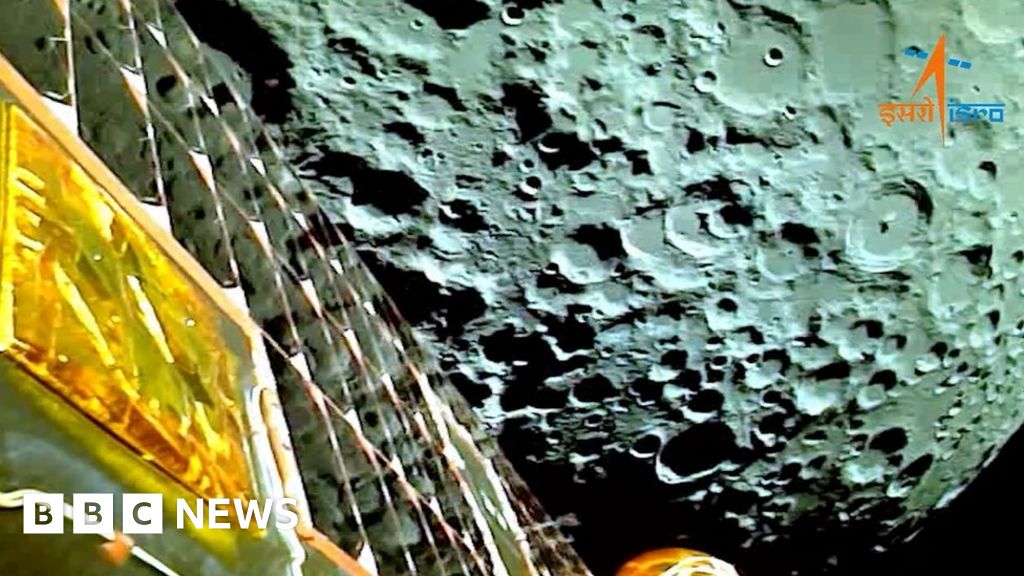- Written by Geeta Pandey
- BBC News, Delhi
An Isro drawing shows the propulsion module as it returns to Earth orbit
The Indian space agency ISRO said it had succeeded in returning part of the rocket that carried its historic mission to the moon recently to Earth’s orbit.
The ‘propulsion module’ separated from the Vikram lander after carrying it close to the Moon where it finally landed on August 23.
After a series of complex maneuvers, the unit returned to Earth’s orbit.
The trial is important for Isro’s plans to bring back manned missions in the future.
Isro said the unit will continue to monitor the Earth from its new location.
When the Chandrayaan-3 lander, carrying the Pragyaan rover in its belly, touched down, India became the first country to land near the little-explored South Pole region of the Moon. It also joined the elite club of countries that have achieved a soft landing on the moon, after the United States, the former Soviet Union, and China.
The lander and rover spent two weeks collecting data and images, and were then put into “sleep mode” when night fell on the lunar surface.
Meanwhile, the propulsion module continued to orbit the Moon, observing the Earth through a scientific instrument it carries – the Spectral Habitable Planet Earth Polarimeter (SHAPE) – and capturing the information and sending it back to Isro.
The space agency says that after operating in lunar orbit for a month, the propulsion module still contained more than 100 kilograms of fuel, and it was decided to use it to conduct some “unique experiments” that would help provide “additional information.” For future lunar missions.
“When the lander separated from the propulsion module, it was in a very tight orbit around the moon,” says Mela Mitra, a former NASA scientist and co-founder of Stem and Space, a Delhi-based space education company. Therefore, the module’s complex, multi-step reverse flight began on October 9, and the first step involved increasing the orbit from 150 kilometers to 5,112 kilometers.
In a press release, ISRO said that the module orbited the Moon several times before exiting the lunar field of influence on November 10, and since November 22, it has been orbiting the Earth.
The space agency says the module remains at an altitude of more than 115,000 km, much higher than the 36,000 km orbit where geostationary satellites are located, to avoid any collision threats. Its payload – SHAPE – continues to operate, observing Earth and sending data back for analysis.
In September, ISRO said the Vikram lander had conducted a successful “jump test”. The agency said the lander “was ordered to turn on its engines, and it rose by about 40 cm.” [16 inches] It landed at a distance of 30-40 cm,” which means that the spacecraft could be used in the future to bring samples to Earth or for human missions.
Ms. Mitra says the latest experience brings Isro one step closer to her return mission. “The experiment is important because it holds a lot of promise for human return missions and space samples as well as for future interplanetary missions.”
Furthermore, once the module ran out of fuel, it would have crashed into the lunar surface where it would remain forever as debris. By bringing it back, Esro also addressed this important issue, she adds.
BBC News India now on YouTube. click here To subscribe and watch our documentary, explanatory and featured films.
Read more India stories from the BBC:

“Extreme travel lover. Bacon fanatic. Troublemaker. Introvert. Passionate music fanatic.”







More Stories
A fossilized creature may explain a puzzling drawing on a rock wall.
MrBeast Sued Over ‘Unsafe Environment’ on Upcoming Amazon Reality Show | US TV
Watch comets Lemmon and SWAN approach Earth today